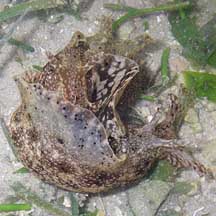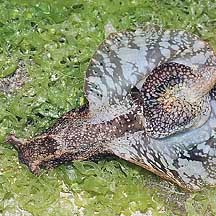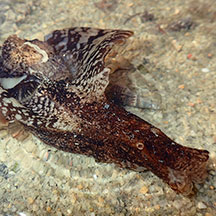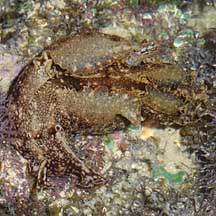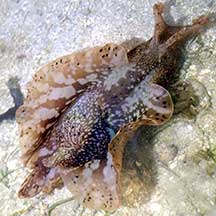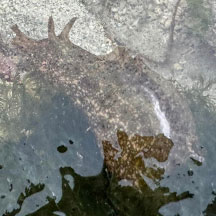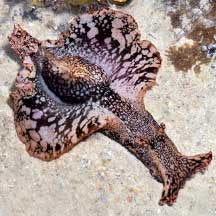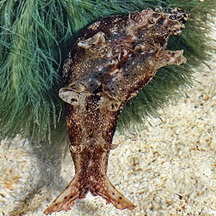 |
|
| sea hares text index | photo index |
| Phylum Mollusca > Class Gastropoda > sea slugs > Order Anaspidea |
| Extraordinary
sea hare Aplysia extraordinaria Family Aplysiidae updated May 2020 Where seen? This sea hare is indeed rather flamboyant, and is sometimes seen on our Southern shores, among seagrasses near reefs. Sometimes, half buried in soft sediments. Elsewhere, it is considered common. Features: 8-10cm, elsewhere it can grow to 40cm long! Body large, fleshy and smooth, various shades of brown with small white spots. The inner surface of the 'wings' (called parapodia) dark with a pattern of irregular white blotchy bars and smaller white blotches. Large rhinophores, oral tentacles with frilly flaps. It releases purple ink when disturbed. It can swim by flapping its parapodia. What does it eat? It is believed to eat seagrass. |
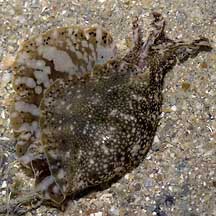 Kusu Island, Apr 05 |
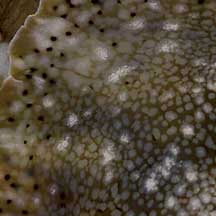 |
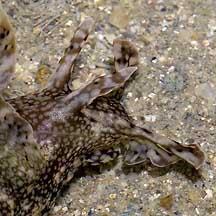 Large, flappy tentacles. |
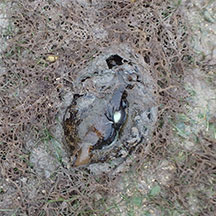 Half buried in soft sediments. Pulau Semakau, Feb 16 |
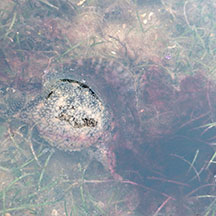 Releasing purple ink. Pulau Semakau, Feb 16 |
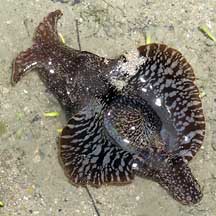 Kusu Island, Mar 06 |
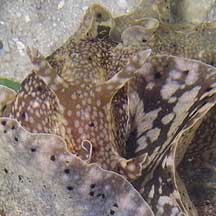 A mating pair with one nestled between the parapodia of another! |
One sea hare nestled in between the parapodia of another. Pulau Jong, May 10 Photo shared by James Koh on flickr. |

|

|
| Extraordinary sea hares on Singapore shores |
On wildsingapore
flickr
|
| Other sightings on Singapore shores |
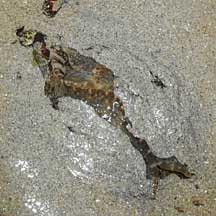 Tanah Merah, Aug 09 |
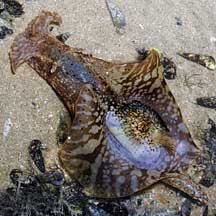 Tanah Merah, Jul 09 |
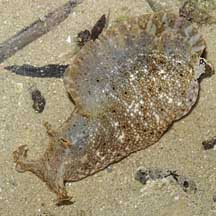 Tanah Merah, Aug 09 |
| |
Links
|
